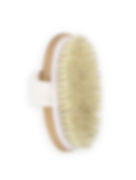Breast Anatomy
The breasts are paired structures located on the anterior thoracic (front chest) wall, in the pectoral region. They are present in both males and females, yet are more prominent in females following puberty.
Use this page to get a clearer understanding of breast anatomy and perhaps discover information you can further research for yourself from here.
Surface Anatomy
The breasts are located on the front chest wall. They lie on top of the pectoralis major and serratus anterior muscles.
At the centre of the breast is the nipple, composed mostly of smooth muscle fibres. Surrounding the nipple is a pigmented area of skin termed the areolae. There are numerous sebaceous glands within the areolae – these enlarge during pregnancy, secreting an oily substance that acts as a protective lubricant for the nipple.

Anatomical Structure
The breast is composed of mammary glands surrounded by a connective tissue stroma.
Mammary Glands
The mammary glands are modified sweat glands. They consist of a series of secretory lobules (small round sacs that produce milk) (15-20) and ducts (canals that carry milk from the lobules to the nipple openings during breastfeeding) and secretory lobules (small round sacs that produce milk).
Each lobule consists of many alveoli drained by a single lactiferous duct. These ducts converge at the nipple like spokes of a wheel.
Breast tissue may sometimes be called glandular tissue.
Connective Tissue Stroma
The connective tissue stroma is a supporting structure which surrounds the mammary glands. It has a fibrous and a fatty component.
The fibrous stroma condenses to form suspensory ligaments (of Cooper). These ligaments have two main functions:
-
Attach and secure the breast to the skin and underlying muscles.
-
Separate the secretory lobules of the breast.
Pectoral Fascia
The base of the breast lies on the pectoral fascia – a flat sheet of connective tissue associated with the pectoralis major muscle. It acts as an attachment point for the suspensory ligaments.
There is a layer of loose connective tissue between the breast and pectoral fascia – known as the retromammary space. This is a potential space, often used in reconstructive plastic surgery.

Vasculature
Arterial (blood) supply to the middle of the breast is via the internal thoracic artery (also known as internal mammary artery) – a branch of the subclavian artery.
The sides of the breast receive blood from four vessels:
-
Lateral thoracic and thoracoacromial branches
-
Lateral mammary branches
-
Mammary branch
The veins of the breast correspond with the arteries, draining into the axillary and internal thoracic veins.
Nerve Supply
The breast is innervated by the anterior and lateral cutaneous branches of the 4th to 6th intercostal nerves. These nerves contain both sensory and autonomic nerve fibres (the autonomic fibres regulate smooth muscle and blood vessel tone).
It should be noted that these nerves do not control the production and secretion of milk. This is regulated by the hormones prolactin and oxytocin, which are secreted from the pituitary gland.
The Female Breast
Changes during childhood and the teen years
Throughout childhood, girls have a small patch of immature breast tissue.
During puberty, hormones produced by the ovaries and pituitary gland (a part of the brain that controls growth and other glands in the body) cause the breasts to grow. This causes the milk ducts to stretch out and become more branched.
The breast tissue then develops into a mature system of lobules and ducts.
The adult breast
Adult women have 15-20 lobes in each breast. Each lobe has 20-40 lobules.
Small milk ducts are attached to the lobules. These ducts join together like branches of grape stems, gradually forming larger ducts.
There are about 10 duct systems in each breast, each with its own opening at the nipple.
Though the breast is mature after puberty, the breast tissue remains inactive until pregnancy.
Pregnancy and breastfeeding
During pregnancy, the lobules grow and begin to produce milk. The milk is then released into the ducts so a mother can breastfeed her baby.
Muscle tissue in the nipples allows them to become erect in response to stimulation or breastfeeding.
Muscle tissue around the lobules helps squeeze milk into the ducts.
Glands on the areola (the shaded circle of skin around the nipple) release small amounts of fluid during breastfeeding to lubricate the nipple.
Changes after menopause
After menopause (when the ovaries stop producing hormones and a woman stops having periods), the number of lobules decreases and those that remain shrink in size.
As breast tissue decreases during menopause, breast density also decreases.
-
Before menopause, the breasts have more breast tissue than fat (higher breast density).
-
After menopause, the breasts typically have more fat than breast tissue (lower breast density).
The Male Breast
Boys and girls begin life with similar breast tissue. However, men don’t have the same complex breast growth and development as women.
At puberty, high testosterone levels and low estrogen levels stop breast development in men.
Men have some milk ducts, but they remain undeveloped. Lobules are most often absent.

Lymphatics
The lymphatic drainage of the breast is of great clinical importance, therefore we have dedicated an entire space entirely to it. Please don't skip the Lymphatic section, as there you will get a deep understanding of its role in the health of your breasts.













